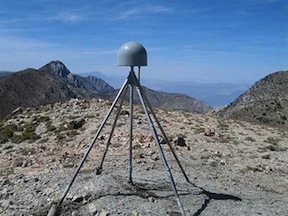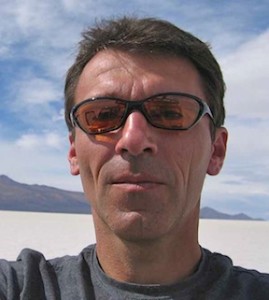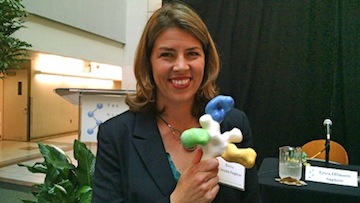Daily Business Report — Aug. 28, 2014
An aerial view of the grounds of the Las Colinas Detention and Re-entry Facility in Santee.
First Phase of Women’s Detention
Facility Completed by Balfour Beatty
If it wasn’t for the occupants, the newly built facilities on the 45-acre property in Santee would resemble a typical college campus.
But it’s only a resemblance. The new buildings are part of the first phase of the two-phase, $221.million contract to build the new Las Colinas Detention and Re-entry Facility.

Balfour Beatty Construction on Wednesday reported the conpletion of the first phase of construction and said the layout combines open space and landscaping amenieies to create a campus-like environment.
Comprising 25 buildings across 45 acres, the 1,216-bed facility replaces the former 1960s-era complex and serves as the point of intake for women inmates in San Diego County. The project was built on existing and adjacent County property.
Phase 2 of construction is scheduled to start in October and is expected to be completed in January 2016.
“Our design-build team met the County’s goal of building a facility that is safe and secure for inmates, staff, and the public at large.” said Brian Cahill, division president of Balfour Beatty Construction’s Southwest division.
The 460,000-square-foot campus includes new housing, inmate receiving and transfer, visitation, laundry, recreation, religious, dining, medical, administrative, warehouse, buildings for inmate industries, rehabilitation and learning resource center, and new entrance with expanded parking for staff and visitors.

Design innovations include clusters of smaller-scale housing units that are grouped according to detention levels that support the varying security classifications and programmatic needs of the inmate population.
The facility was designed by executive architect Kaplan McLaughlin Diaz of San Francisco. Associate architect is HMC of San Diego. Several green building techniques and materials were incorporated into the project.
************

Severe Drought is Causing the
Western United States to Rise
The severe drought gripping the western United States in recent years is changing the landscape well beyond localized effects of water restrictions and browning lawns. Scientists at Scripps Institution of Oceanography at UC San Diego have now discovered that the growing, broad-scale loss of water is causing the entire western U.S. to rise up like an uncoiled spring.

Investigating ground positioning data from GPS stations throughout the West, Scripps researchers Adrian Borsa, Duncan Agnew, and Dan Cayan found that the water shortage is causing an “uplift” effect up to 15 millimeters (more than half an inch) in California’s mountains and on average four millimeters (0.15 of an inch) across the west. From the GPS data, they estimate the water deficit at nearly 240 gigatons (63 trillion gallons of water), equivalent to a four-inch layer of water spread out over the entire western U.S.
Results of the study, which was supported by the U.S. Geological Survey (USGS), appear in the August 21 online edition of the journal Science.
While poring through various sets of data of ground positions from highly precise GPS stations within the National Science Foundation’s Plate Boundary Observatory and other networks, Borsa, a Scripps assistant research geophysicist, kept noticing the same pattern over the 2003-2014 period: All of the stations moved upwards in the most recent years, coinciding with the timing of the current drought.
Agnew, a Scripps Oceanography geophysics professor who specializes in studying earthquakes and their impact on shaping the earth’s crust, says the GPS data can only be explained by rapid uplift of the tectonic plate upon which the western U.S. rests (Agnew cautions that the uplift has virtually no effect on the San Andreas fault and therefore does not increase the risk of earthquakes).
Survey: Health Insurance to be Bigger Impact
On Bottom Line Than Minimum Wage Increase
The rise of health insurance costs could pose more of a problem for San Diego companies than the recent increase in San Diego’s minimum wage, according to the 66th annual Wage and Salary Survey presented by the San Diego Employers Association (SDEA).
Even though most companies surveyed were not required to audit their pay structures after the minimum wage increase, some reported that the cost of health insurance has had a greater impact on their bottom line than the recent rise in minimum wage. Average salary increases show a 3.5-percent rise for non-exempt employees and a 3.1- percent rise for exempt employees. These increases are slightly higher than the national average of 2.9-percent to 3-percent.
“We suggest that local employers shift more resources to cover these increases so that they won’t be cut short,” said Chris Bryant, president of SDEA. “We will continue to monitor this upward trend moving forward. We want to see if it is due to the minimum wage increase or if it is a sign of growing employer confidence in our local economy’s recovery.”
The survey also revealed that 62 percent of participants reported incentives as a key salary component — individual and companywide. This is important information to keep in mind while evaluating your company’s compensation package, according to the SDEA.
Copies of the 2014 San Diego Wage and Salary Survey are available for $650 for non-SDEA members and $450 for members. Call (858) 505-0024 or visit www.sdea.com.
Global Hawk Aircraft Exceed 100,000 Combat Hours

Air Force and Navy unmanned aircraft built by the Northrop Grumman San Diego division have surpassed 100,000 hours of service in combat and operational support, the company announced Wednesday.
The Global Hawk aircraft are part of Northrop Grumman’s high altitude long endurance, or HALE series. The 100,000 total hours milestone was exceeded in September 2013.
“Global Hawk has continuously and successfully supported overseas contingency operations since its first deployment to Afghanistan after the Sept. 11, 2001, attacks,” said Jim Culmo, vice president of Northrop Grumman’s HALE Enterprise. “Operating 11 miles above danger zones, Global Hawk is a strategic airborne asset with unprecedented endurance, range and persistence providing decision makers near real-time information from around the world.”
The aircraft have been used on missions over Afghanistan, Iraq, Libya and Nigeria. Global Hawks allow military commanders to gather near real-time imagery and use radar to detect moving or stationary targets on the ground. The aircraft also provide airborne communications capabilities to military units in harsh environments.
San Diego Venture Group Has New President

Mike Krenn, founder of Tech Coast Angeles and CommNexus, will succeed Dave Titus as the president of the San Diego Venture Group. Titus has stepped down from the position to take a business development and marketing position at the Cooley law firm, where he will help the firm’s technology clients.
In the past, Krenn has worked at various law firms helping technology companies with business plans, management issues, market development and financing.

Ebola Researchers Describe
Fighting ‘Worst Virus We Know’
A Scripps Research Institute scientist who is a central figure in studying the Ebola virus described it Wednesday as the “worst virus we know.”
“Ebola is the worst virus that we know. It is so lethal because it replicates so rapidly,” said Dr. Erica Ollmann Saphire. “It infects nearly every cell type a human has.”

Saphire was joined by Marc O’Donnell, chief operating officer of Project Concern International, and Kevin Whaley, CEO of Mapp Biopharmaceutical, on a panel at the Scripps laboratories in La Jolla.
Whaley, whose company developed the ZMapp drug that was successful in saving the lives of two Americans, credited Saphire with identifying many of the antibodies used in the drug.
“Although Mapp has gotten a lot of credit for ZMapp, we have been part of a large consortium…We don’t do it on our own,” Whaley said. He said his company is “working very aggressively” with new federal funding to step up production, but declined to give a timeline.
O’Donnell described the impact on Liberia, a poor African country, as dire, with ripple impacts on medical care, the economy and the food supply. “It’s a crisis. It’s a dire crisis. People are running scared and rightfully so. It’s now the ripple effects…I think it’s fair to say that certain systems are crumbling,” he said.
His organization has staff on the ground in Liberia managing programs to prevent disease, improve community health and promote sustainable development.
Saphire said her lab is working to identify as many antibodies as possible in the fight against Ebola. “Every Ebola lab in the world…is sending all of their antibodies to Scripps,” she said.
All of the panelists expressed concern about the virus traveling to other locations. “What viruses do best is travel,” Saphire noted, adding that HIV once infected just three people in Africa.
— Times of San Diego
Clearpoint Agency Hires Account Executive
Clearpoint Agency, a public relations and digital marketing firm based in San Diego, has hired Samantha Peterson as an account executive. She will be responsible for managing client accounts and developing campaign strategies drawing on her experience in PR, social media, graphic design and digital marketing.
Peterson most recently held the title of director of communications for the San Diego and Imperial Counties Labor Council, AFL-CIO. She also spent several years working in government relations on Capitol Hill in the office of U.S. Sen. Dianne Feinstein and for Washington, D.C.-based public relations firm The Curley Company.




